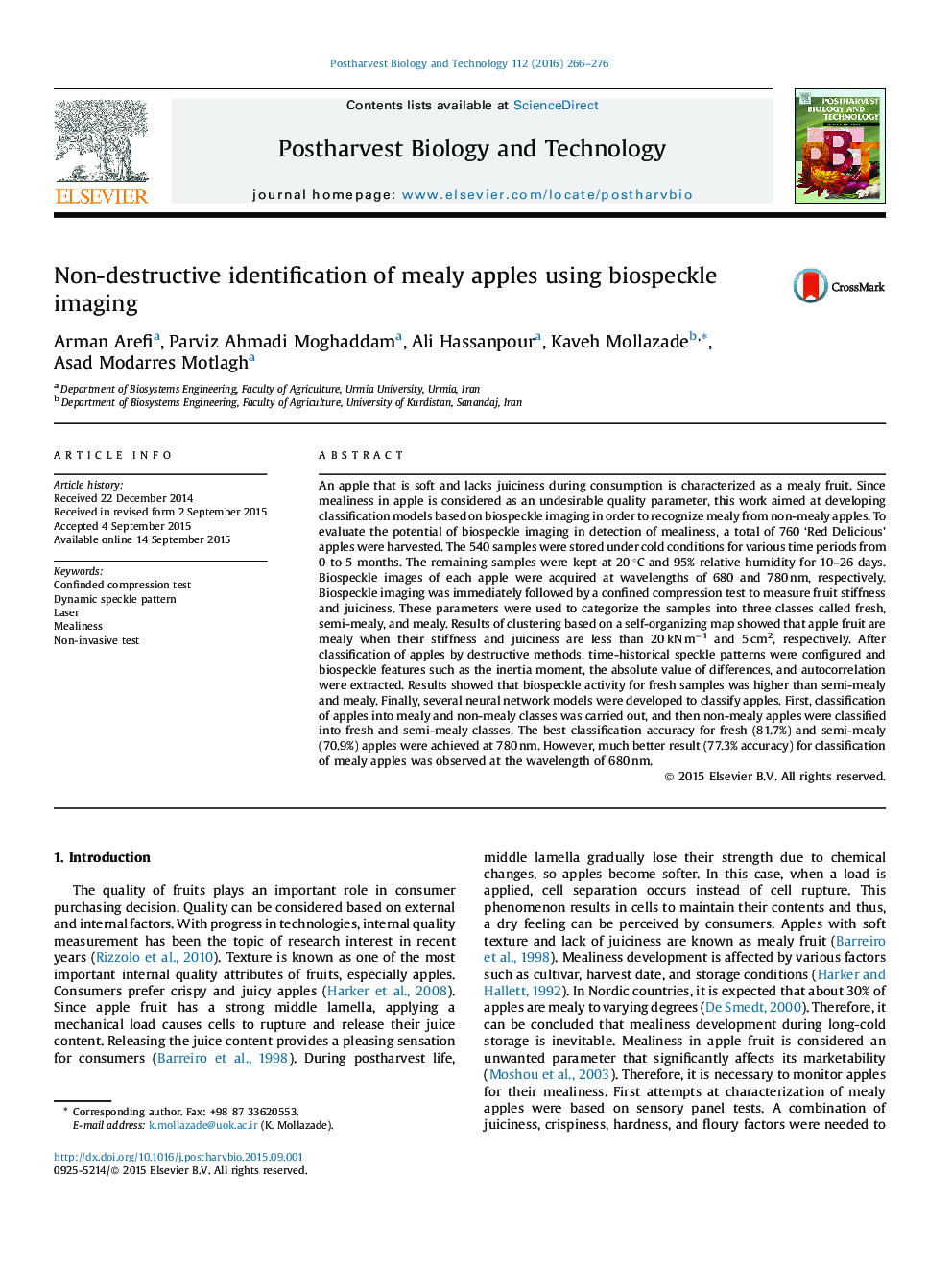| Article ID | Journal | Published Year | Pages | File Type |
|---|---|---|---|---|
| 4517946 | Postharvest Biology and Technology | 2016 | 11 Pages |
•Fresh apples showed a higher biospeckle activity compared to semi-mealy and mealy.•Classification accuracies for fresh and mealy apples were 81% and 77%, respectively.•Rather low classification accuracy of 70% was observed for semi-mealy apples.
An apple that is soft and lacks juiciness during consumption is characterized as a mealy fruit. Since mealiness in apple is considered as an undesirable quality parameter, this work aimed at developing classification models based on biospeckle imaging in order to recognize mealy from non-mealy apples. To evaluate the potential of biospeckle imaging in detection of mealiness, a total of 760 ‘Red Delicious’ apples were harvested. The 540 samples were stored under cold conditions for various time periods from 0 to 5 months. The remaining samples were kept at 20 °C and 95% relative humidity for 10–26 days. Biospeckle images of each apple were acquired at wavelengths of 680 and 780 nm, respectively. Biospeckle imaging was immediately followed by a confined compression test to measure fruit stiffness and juiciness. These parameters were used to categorize the samples into three classes called fresh, semi-mealy, and mealy. Results of clustering based on a self-organizing map showed that apple fruit are mealy when their stiffness and juiciness are less than 20 kN m−1 and 5 cm2, respectively. After classification of apples by destructive methods, time-historical speckle patterns were configured and biospeckle features such as the inertia moment, the absolute value of differences, and autocorrelation were extracted. Results showed that biospeckle activity for fresh samples was higher than semi-mealy and mealy. Finally, several neural network models were developed to classify apples. First, classification of apples into mealy and non-mealy classes was carried out, and then non-mealy apples were classified into fresh and semi-mealy classes. The best classification accuracy for fresh (81.7%) and semi-mealy (70.9%) apples were achieved at 780 nm. However, much better result (77.3% accuracy) for classification of mealy apples was observed at the wavelength of 680 nm.
